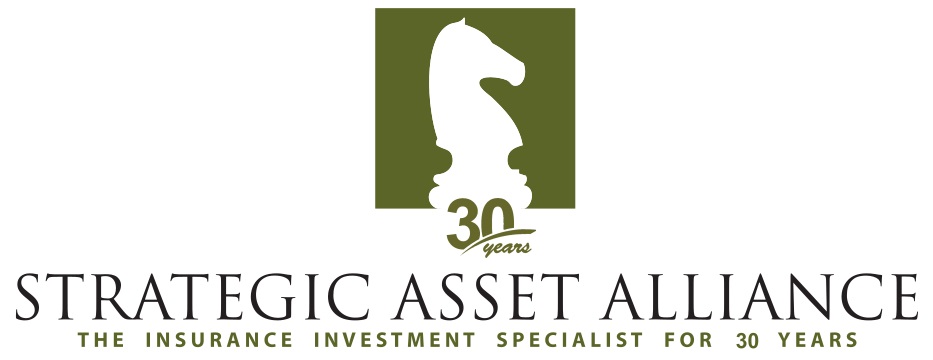 March 17-18, 2021
March 17-18, 2021
Virtual Conference
Learn More / Register >>
How Constrained Insurers Should Approach Asset Allocation
We spoke with AAM - Insurance Investment Management to discuss the asset allocation approach for constrained insurance companies. Highlights from the discussion include important ERM considerations, corporate governance best practices and portfolio re-balancing.
Colin Dowdall Principal, Director of Marketing & Business Development AAM – Insurance Investment Management | www.aamcompany.com/
SAA: What are the most important ERM considerations for insurers when setting a strategic asset allocation?
AAM: Insurers are developing increasingly sophisticated Enterprise Risk Management programs to identify, measure, and mitigate risks to organizational success. Robust ERM processes identify corporate values and stakeholder priorities and define the key sources of existing and emerging risks to the achievement of these goals. AAM believes this framework is appropriate when developing the strategy for deploying capital into financial markets.
Corporate structure, financial strength, product mix, growth plans, geographical focus, financial strength rating objectives, and board risk appetite are among the key elements that will influence the asset allocation process.
In order for a Board to properly define the investment strategy that aligns with corporate priorities and characteristics, management teams and their external investment partners increasingly rely upon sophisticated capital models that offer perspectives on risk & return. For example, regulatory capital models are designed to measure solvency levels in stress scenarios and ensure that investment decisions lead to compliance with applicable laws.
Rating agency capital models similarly identifies carrier operating performance and financial strength in base & stress scenarios. Economic capital models are designed to identify return on and risks to capital across a distribution of possible outcomes. These tools are extremely useful in identifying periodic potential liquidity needs, duration positioning, and capital available to bear market risk and provide valuable information as decision makers evaluate return potential and risk appetite.
We find that our most thoughtful clients also carefully consider subjective elements, including board perspectives on reputational risk and brand strength, which can have a significant influence on risk appetite and the resulting asset allocation.
SAA: How often should insurers rebalance their portfolio and/or re-evaluate their asset mix?
AAM: The timing of the asset reviews and rebalancing will vary to some extent according to each company’s objectives and needs, but it’s important to hold a regularly scheduled review to ensure a company’s changing risk profile is reflected in the asset mix. Rebalancing the asset allocation can lead to realizing taxable gains, but encourages “buying low and selling high” by adjusting positions up or down as they fall or rise, respectively. Generically speaking though, around once a year is a reasonable interval.
As for reviewing and revising the asset allocation, there are two key considerations. First, to allow enough time for a given investment strategy to “play out” without second-guessing it, while still providing necessary oversight; for that a period of approximately 3-5 years is usually appropriate.
Secondly, if a company’s circumstances change significantly (e.g. due to underwriting differing substantially from expectations, or an acquisition) then that could be a trigger to revise the asset allocation immediately, even if it was only recently set up.
In general the goal here is to strike a balance between keeping the asset allocation up-to-date with the company’s objectives and constraints, while recognizing that investment strategies tend to underperform if changed too frequently, especially if changed in reaction to major market moves.
SAA: What corporate governance best practices are supportive of a comprehensive investment process?
AAM: We believe a well-defined investment process should clearly delineate responsibilities for designing and approving the investment strategy, managing day-to-day implementation, and providing regular oversight and review. This should begin with a board-level investment committee responsible for overseeing development of the strategy, defining risk tolerances and constraints, approving a formal investment policy, establishing parameters for tactical portfolio adjustments, and providing ongoing oversight of the investment manager.
Meanwhile, the manager should support the development of the investment strategy through advice, analysis, and modeling, implement the strategy day-to-day in accordance with the investment policy, provide daily monitoring of performance, compliance, and positioning versus return objectives and risk tolerances, and deliver regular reports to the investment committee, Chief Risk Officer, or other appropriate oversight personnel.
Other third parties may contribute to the process by providing technology and systems for monitoring investment holdings, performing sophisticated capital modeling, auditing compliance with investment policies and suitability of internal controls, providing periodic updates on relevant market and industry developments, and offering tactical recommendations on supplementary asset classes.
SAA: What investment objectives are most common to insurance companies and what factors influence prioritization of these objectives?
AAM: Insurer investment strategies typically include objectives like: supporting the underwriting process, growing surplus over the long term, offsetting interest rate risk embedded in liabilities, and providing needed liquidity.
Core investment-grade bond holdings are a major source of income for insurers, and many (especially on the Life side) include embedded investment yield assumptions when designing new products. Additionally, loss reserves are typically one of the largest liabilities on insurer balance sheets, and asset-liability matching best practices dictate that insurers of “long-tail” lines should offset their reserves with long-duration assets, and vice versa for short-tail lines.
Under statutory accounting certain classes of bonds are not marked to market through surplus, so the question of whether STAT or GAAP applies to a given insurer can drastically affect its ability to tolerate interest rate risk and spread widening from lower-quality issuers in the bond portfolio.
Relatedly, non-core “risk assets” like equities or high yield bonds can provide significantly higher (and uncorrelated) returns to surplus over time for companies able to tolerate higher surplus volatility as a tradeoff. Meanwhile insurers with less-predictable cash flow needs (like catastrophe P&C insurers) need ready sources of liquidity for lumpy claims payouts, and may thus emphasize cash and highly-liquid, short-duration bonds.
Source: Strategic Asset Alliance, AAM - Insurance Investment Management The information contained herein has been obtained from sources believed to be reliable, but the accuracy of information cannot be guaranteed.
